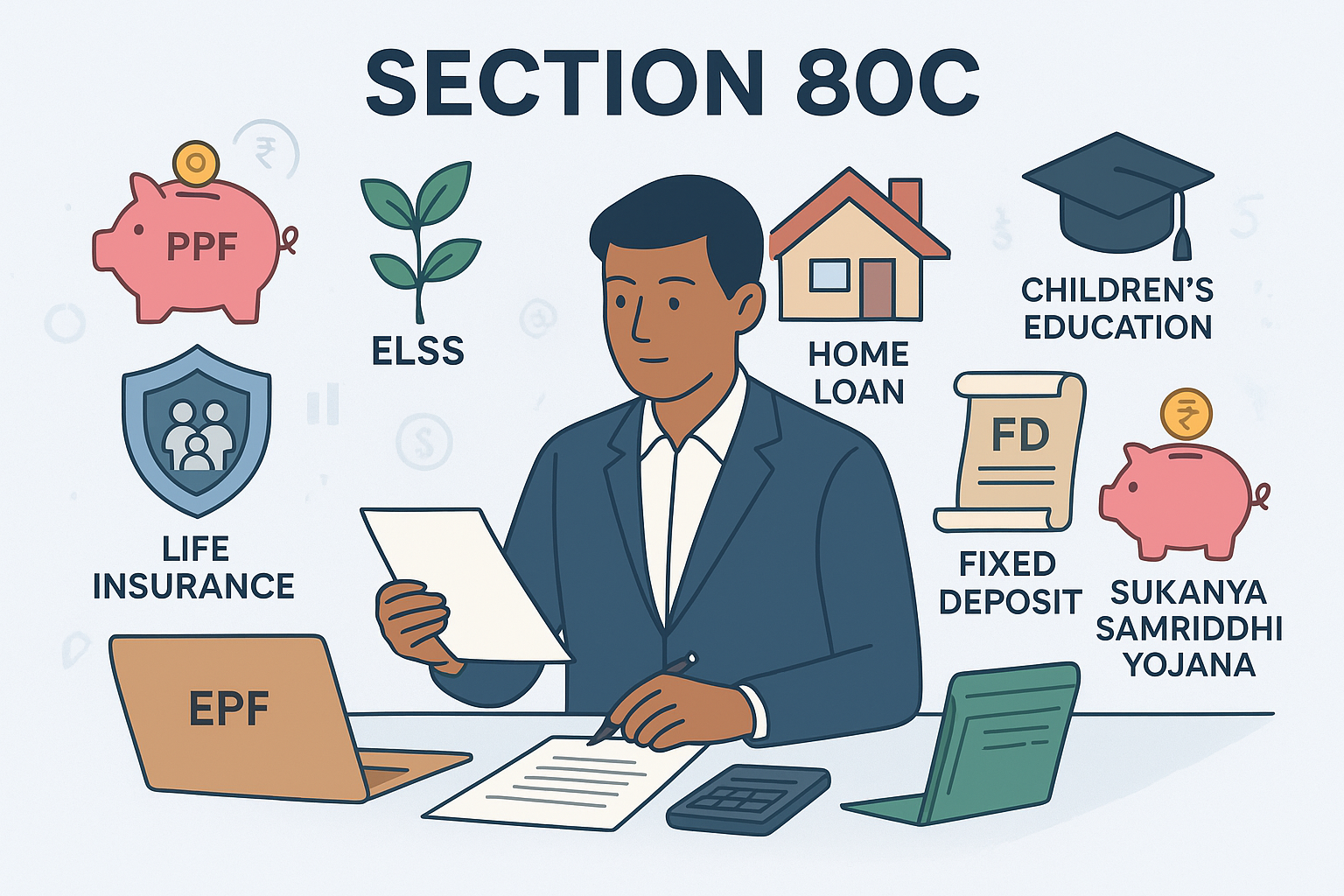When tax season rolls around, most of us start looking for ways to reduce our taxable income while still making sound financial choices. That’s where Section 80C of the Income Tax Act comes in.
Section 80C is perhaps the most sought-after provision since it enables you and Hindu Undivided Families (HUFs) to take deductions of up to ₹1.5 lakh for every financial year. What makes this section so good is that it not only saves you tax but also nudges you toward disciplined investing.
If you’re curious about what investments are eligible, check out these best tax-saving tools under Section 80C:.
1. Employee Provident Fund (EPF)
- Salaried employees’ contribution to EPF can be deducted under Section 80C.
- Even the interest and maturity value are tax-exempt (provided you serve for 5 years).
Suitable for: Low-risk, long-term investors seeking a safe retirement corpus.
2. Public Provident Fund (PPF)
- A highly secure plan with a 15-year lock-in.
- The revised quarterly interest rate remains around 7%–8%.
- Interest earned and maturity proceeds are fully tax-free (EEE status).
Suitable for: Conservative investors who want safe, long-term wealth creation.
3. Equity Linked Savings Scheme (ELSS)
- A mutual fund with lock-in of just 3 years (the lowest among 80C choices).
- Returns are linked to the market and, historically, have beaten inflation in the long term.
- Taxable on withdrawal, eligible for deduction up to ₹1.5 lakh.
Suitable for: Those ready to take some risk for possibly higher returns.
4. National Savings Certificate (NSC)
- A scheme offering fixed income with a holding period of 5 years.
- The interest received is taxable, but the interest reinvested also attracts 80C deduction until maturity.
Suitable for: Low-risk investors looking for assured returns.
5. Life Insurance Premiums
- Premiums of life insurance policies (self, spouse, or children) are eligible under Section 80C.
- Ensure that the premium amount does not exceed 10% of the sum assured (for policies taken after April 1, 2012) to enjoy full benefits.
Suitable for: Investors seeking financial security along with tax relief.
6. Fixed Deposit (FD) – Tax-Saving FD
- Has a lock-in period of 5 years.
- The interest so earned is taxable, as opposed to PPF or EPF.
Suitable for: Conservative investors seeking guaranteed returns with low complexity.
7. Sukanya Samriddhi Yojana (SSY)
- A plan specific to the girl child.
- Tax-free maturity and attractive interest rates (more than PPF in a majority of cases).
- Up to ₹1.5 lakh can be deposited every year by parents or guardians.
Suitable for: Parents saving for daughter’s higher studies or marriage.
8. Home Loan Principal Repayment
- The EMI principal amount is eligible for 80C deduction.
- Also assists you in creating an asset while saving taxes.
Suitable for: People with home loans who want to save maximum taxes.
9. Fee for the Children’s Education
- Fees deposited towards the education of a maximum of two children qualify under 80C.
- Any fee paid for tuition (excluding donations, transport, or development charges) is eligible.
Suitable for: Parents wanting relief on education expenses.
CONCLUDING REMARKS
Section 80C is not merely a tax-saving avenue—it’s a door to financial security. The fact that the highest deduction you can avail stands at ₹1.5 lakh is irrelevant; what matters is choosing the right instruments based on your financial objective, risk profile, and duration of holding.
If you are young and can take some risk, ELSS may provide the highest returns. If stability and security are more important, PPF or NSC may be the best. Parents might like SSY or tuition fee benefits, while salaried class persons automatically enjoy EPF contributions.
Pro Tip: Don’t invest blindly in March only for the sake of saving tax. Decide on your 80C investments at the start of the financial year so that your money works longer for you.
